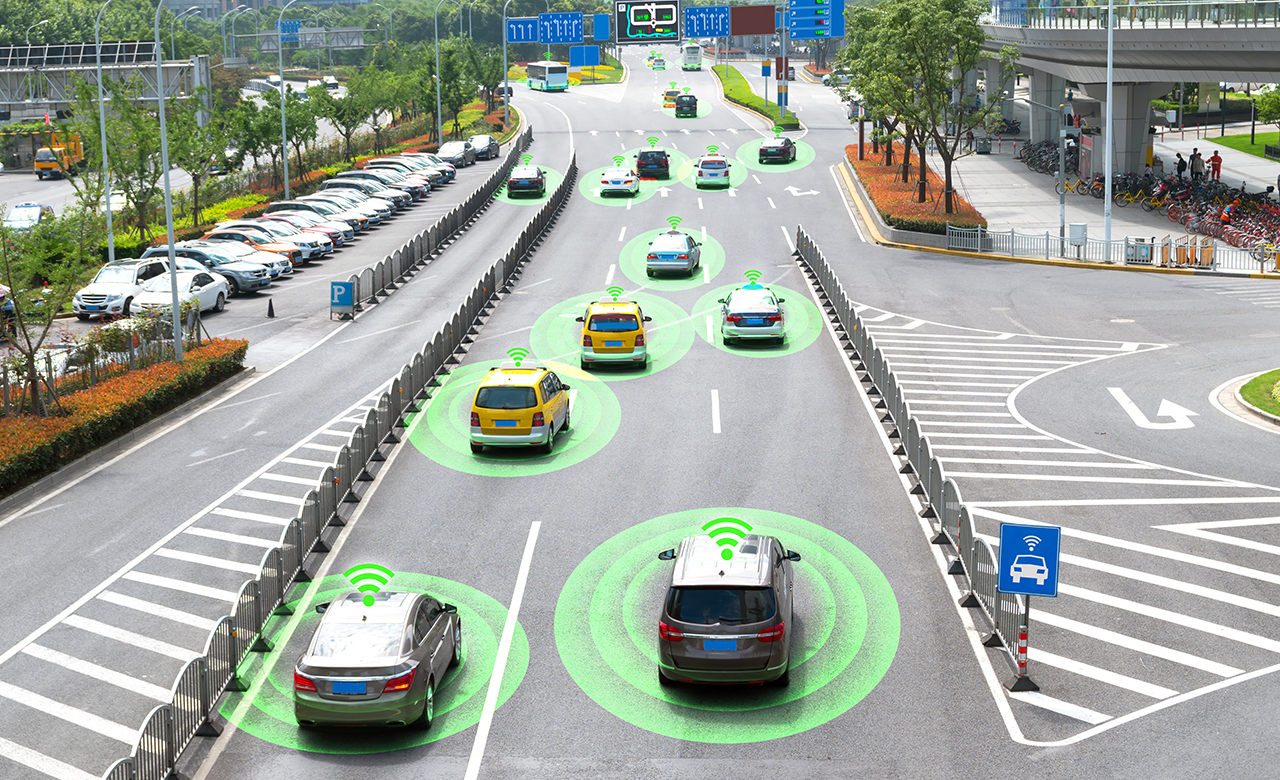
The automotive industry is at the cusp of a revolution fuelled by technological and business innovations. On the technology side, we have the advent of EVs, IoT, 5G, and AI/ML, which are not just changing the end product by introducing driverless autonomous connected vehicles, but affect the entire value chain, i.e., the manufacturing process, the purchase process, and the driving experience, to name a few.
On the business innovation side, one example would be that OEMs are experimenting with different types of ownership models as the infrastructure reliance on the vehicle is increasing. The OEMs have to figure out the services which would be internalized in the cost of ownership and the ones to be provided on rental.
How is the AV industry segmented?
When thinking about the way the autonomous vehicle industry is segmented based on its use cases, we have to consider the following scenarios:
- Where is the vehicle operating? i.e., whether it’s an urban setting or highway environment as the infrastructure (hardware and software) requirements change based on that
- Ownership of the vehicle is another element that involves, on the one hand, private ownership vs. fleet ownership and, on the other complete ownership, rental and hybrid models. This is important because it changes the operating and economic models on which the business has to run
- The commodity being transported is another one wherein a vehicle could be carrying individual vs. goods for either personal use or commercial purposes
Let’s look at some prevalent use cases
Keeping in mind the above parameters, let’s dive into some of the common use cases in which the various players in the industry are organized

RoboTaxi: There are hundreds of AVs taxiing people around in the streets of the US and China with no driver behind the wheel as you read this. Two AV initiatives backed by the biggest tech and automotive giants have already obtained the license to charge customers for the ride in the US. There is a slightly nuanced version of this use case where EVs have been deployed in geo-fenced areas like office and college campuses, hospitals, and airports to ply on fixed routes. Thus eliminating the need for mapping, location, and complex ADAS solutions required for ensuring safety while dealing with unpredictable environmental conditions

Trucks: The trucks and heavy-duty carriers in the US and Europe logistics industry are faced with an acute shortage of manpower due to the harsh working conditions and partly due to COVID 19 pandemic-led workforce migration. This shortage coupled with promised economic benefits of a 30% reduction in per-mile operating cost owing to lower labor costs, optimized drive times and ranges, improved fuel efficiency, and enhanced safety seemed to have fuelled the adoption of EVs in this sector. However, there remains tepid adoption on long highway hauls due to lack of infrastructure, but short-haul and Intracity use case is already seeing good adoption.

Delivery robots: With EV trucks serving the long haul and middle mile deliveries, the last mile onus lies on the delivery robots, which have seen major adoption in urban centres across US and Europe. Some of the market players have adopted a hybrid operating model for these bots wherein a tele operator takes control of steering the bot when it is encountered by untrained obstacles and situations en route.
Industrial complex and Logistics yards: Some of the AVs serving this industry include autonomous Forklifts, Tuggers, and Pickers. Potentially hazardous and risky operating environments have seen the use of these autonomous AVs in a hybrid structure where part autonomous and part tele operator guided operating model is running the show
What are SAE Levels for AV based on autonomy?
Another lens to look at the autonomous vehicle is the level of autonomy; SAE (Society of Automotive Engineers) defines it in the following fashion:

Although the level 5 autonomous vehicles are still a good 10-15 years away, the technology leading to them has started to mature.
On the hardware side, the cost of LIDAR sensors has reduced by 10 over the last five years, and computational capacity with GPUs has risen. On the software side, the challenges that the industry faces are in the development of neural decision-making nets (AI). However, they lack in most parts due to the absence of good quality annotated datasets for object detection and categorization. With some automation built into the annotation process for the low-end use case of bounding boxes, the fact remains that it is still a majorly human-led endeavor for high-quality and contextual knowledge-based annotation use cases.
In a nutshell
Mass adoption of Autonomous Vehicles and the ADAS systems powering them are reliant to a large extent on the development of connected infrastructure and AI models powering the core engine of autonomy. Successful case-specific deployment of AI models heavily depends on the availability of effective and high quality scalable training datasets critical to AVs’ performance. The data provided is highly sensitive and, in most cases, requires enterprise-grade systems along with end-to-end workflows to ensure privacy and high quality output.
Managed Service Providers are currently solving this piece in the Annotation and Labelling Space with in-house subject matter experts who work closely with clients to understand their project needs and configure bespoke annotation workflows. These workflows transparently provide progress, quality, and performance of annotations done via annotator workforce who are experienced at performing high-quality labeling tasks using LiDAR data, satellite imagery, aerial imagery, pictures & videos.